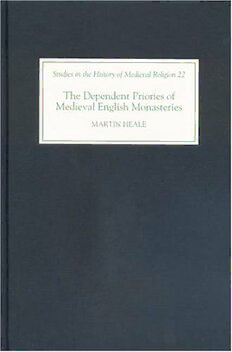
The Dependent Priories of Medieval English Monasteries PDF
401 Pages·2004·2.571 MB·English
Most books are stored in the elastic cloud where traffic is expensive. For this reason, we have a limit on daily download.
Preview The Dependent Priories of Medieval English Monasteries
Description:
Although hundreds of dependent priories were founded across medieval Europe, they remain little studied and much misunderstood. This first full-length study of the history of the 140 or so daughter houses of English monasteries takes issue with the orthodox opinion that they were primarily administrative in function. The author begins by examining the reasons for the foundation of these monasteries (frequently on the initiative of local landowners, or to foster important local cults centering on relics of images), and the relations between dependent priories and their mother houses, bishops and patrons. He goes on to investigate everyday life in cells, the priories' interaction with their neighbours, their place in the local community, and their economic viability. The unusual pattern of dissolution of these houses is also revealed. Throughout, Dr Heale argues that the dependent priories sheds a great deal of light on the world of the small religious house, and suggests that these shadowy institutions were far more central to medieval religion and society than has been appreciated.
See more
The list of books you might like
Most books are stored in the elastic cloud where traffic is expensive. For this reason, we have a limit on daily download.
